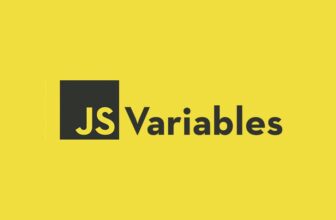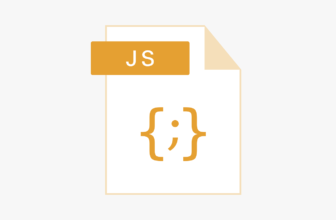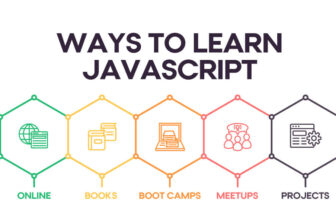Understanding JavaScript Classes
Certainly! JavaScript classes are a fundamental feature introduced in ECMAScript 2015 (ES6) to allow developers to create objects using a more familiar syntax similar to class-based languages like Java or C++. Classes provide a way to define blueprints for creating objects with properties and methods.
- Templates for Creating Objects: While JavaScript is fundamentally prototype-based, classes provide a syntax similar to other object-oriented languages, making it easier to structure and organize code. They act as blueprints for creating objects with shared properties and methods.
- Encapsulation: Classes bundle data (properties) and behavior (methods) together, promoting modularity and information hiding. This helps manage complexity and reduces the risk of unintended side effects.
- Constructors: The
constructormethod is a special function that’s automatically called when you create a new object from a class. It’s responsible for initializing properties and performing any necessary setup. - Inheritance: Classes can inherit properties and methods from other classes (parent classes), enabling code reuse and creating hierarchical relationships between objects. This allows you to specialize functionality without duplicating code.
Key Concepts:
- Class Declaration and Expression:
- Declaration:
class ClassName { ... } - Expression:
const ClassName = class { ... } - Both are valid, but declarations are hoisted while expressions are not.
- Declaration:
- Properties:
- Define attributes or characteristics of objects.
- Can be declared inside the class or dynamically using
this.propertyName. - Use
thisto access instance properties within methods.
- Methods:
- Functions defined within a class, operating on the object’s data.
- Called using the object instance (e.g.,
objectName.methodName()). thisinside a method refers to the current object instance.
- Inheritance:
- Use the
extendskeyword to create subclasses that inherit properties and methods from parent classes. - Subclasses can override inherited methods or add new ones.
- Use the
- Static Members:
- Properties or methods associated with the class itself, not individual instances.
- Accessed using the class name (e.g.,
ClassName.staticMethod()).
Example: JavaScript
class Person {
constructor(name, age) {
this.name = name;
this.age = age;
}
greet() {
console.log(`Hello, my name is ${this.name} and I am ${this.age} years old.`);
}
}
const person1 = new Person("Alice", 30);
const person2 = new Person("Bob", 25);
person1.greet(); // Output: Hello, my name is Alice and I am 30 years old.
person2.greet(); // Output: Hello, my name is Bob and I am 25 years old.
Additional Notes:
- Classes are syntactic sugar built on top of JavaScript’s prototypal inheritance.
- Understand prototype-based inheritance for a deeper understanding.
- Classes offer a more familiar syntax for those coming from object-oriented languages.
- Consider using classes when code organization and readability are crucial, but they’re not always necessary.
Here’s an overview of the key components and concepts related to JavaScript classes:
Class Declaration: Classes in JavaScript are declared using the class keyword followed by the class name.
javascript
class MyClass { // class body }Constructor Method: The constructor method is a special method that gets called when an instance of the class is created. It’s used to initialize object properties.
javascript
class MyClass { constructor(prop1, prop2) { this.prop1 = prop1; this.prop2 = prop2; } }Instance Methods: These are methods defined within the class that can be called on instances of the class.
javascript
class MyClass { constructor() { // constructor } myMethod() { // method body } }Static Methods: These are methods that are called on the class itself, rather than on instances of the class. They are defined using the static keyword.
javascript
class MyClass { static myStaticMethod() { // static method body } } MyClass.myStaticMethod(); // Calling a static methodPrototype Inheritance: JavaScript classes support prototype-based inheritance. You can use the extends keyword to create a subclass (a class that inherits from another class).
javascript
class Parent { // parent class } class Child extends Parent { // child class }Super Keyword: The super keyword is used to call methods of the super-class within a subclass.
javascript
class Parent { constructor() { this.parentProp = 'parent'; } } class Child extends Parent { constructor() { super(); // calling parent class constructor this.childProp = 'child'; } }Getters and Setters: JavaScript classes support getter and setter methods for accessing and setting properties.
javascript
class MyClass { constructor() { this._prop = 0; } get prop() { return this._prop; } set prop(value) { this._prop = value; } } const obj = new MyClass(); obj.prop = 10; // setter called console.log(obj.prop); // getter calledPublic and Private Fields: With more recent versions of JavaScript (ES2022), you can declare private fields using the hash (#) symbol.
javascript
class MyClass { #privateField; constructor() { this.#privateField = 10; } getPrivateField() { return this.#privateField; } }JavaScript classes provide a more organized and intuitive way to work with objects and inheritance in JavaScript, making the code more readable and maintainable.
You might be interested to learn from our other JavaScript articles here – JavaScript Variables, JavaScript Basics, JavaScript, JavaScript Learning
And another important resource for you to learn JavaScript is – https://www.freecodecamp.org/news/how-to-learn-javascript-effectively/






